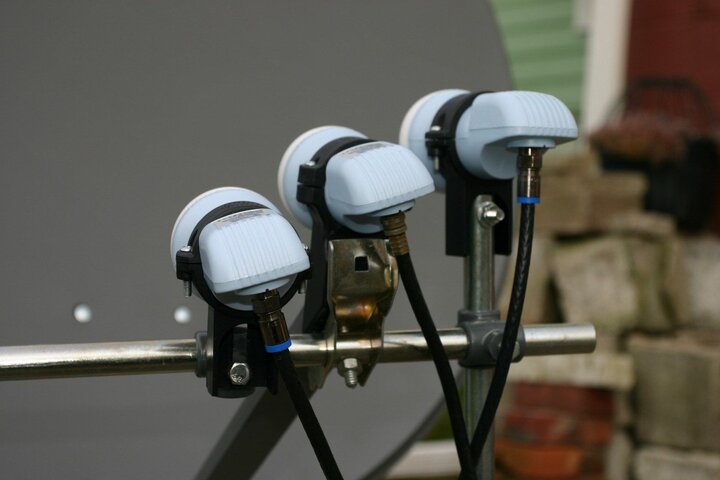Payam,
I am glad to hear that you have finally dialed 97.0 W in on your system. That is good work and congratulations!

I assume that you have it all figured out now, at least to your acceptance anyways.
I just happened upon your thread just now and read it over. You have this issue resolved, so there is little that I need to offer to you in this regard, but maybe I can point out a few helpful hints to others for their endeavors. These points are going to be quite redundant to many here, so for those who are already aware of these items and tips, you can just ignore me for now. Once you get it, you got it!
Gordy's Tips:
01] Set mast for dish and motor in a location that provides the best possible coverage for a particular satellite or for the full coverage of the arc of all satellites. Beware of hills and buildings and trees and even power poles. You don't want any interference, even if it is slight it you can avoid it.
02] Set the mast that the dish (or motor and dish) is to attach to or rest upon to the most precise vertical plumb angle that you can possibly achieve. The mast or post must be perfectly upright and plumb in all cardinal directions as all the other angles depend upon this as a reference.
03] Utilize a well known angle calculator to provide you with at least ball-park angles for each sat that you are attempting to detect.
04] Utilize the LATITUDE scale on your motor (if you are using a motor) and set that scale to the same degree as your site's LATITUDE degree. Once this LATITUDE angle is set, don't adjust it. Most motors are sufficiently accurate in this regard, so unless you suspect that there is an obvious discrepancy, don't mess with this setting once you have set it initially. It is 99% correct.
05] Set your DISH elevation to the degree angle that the manual instructs you to use or that an online calculator provides. Most of these are just as accurate as you will ever need to start with. You can and probably will readjust slightly to peak the signal for the optimum reading later on in the process. Don't get too carried away with perfection just yet.
06] Obtain a cheapo old TV and a legit FTA receiver that has been recommended as a USER FRIENDLY model for detecting and scanning channels and TPS and take each of these out to you installation site. Use this equipment to "fine tune" your dish and motor alignments to provide the best possible signal QUALITY reading that you can.
07] Begin with your true south satellite first. Fine tune the signal from that satellite first and then make your way across the sat arc, a little bit at a time and fine tune as you go. Motor the assembly a little east and or a little west and tweak for best signal, then return to the true south sat and repeak it, then start over. Keep making your way across the horizon and improving your signal on each sat as you proceed.
08] Always use and rely upon satellites and TPs and channels which are KNOWN to be consistently broadcasting a signal to your area. Ignore intermittent FEED channels while setting up yuou equipment and aligning it.
09] Utilize one of the lesser expensive or less "high-tech" receivers to experiment with at first. Such as a Coolsat 4, 5 or 6K or the Fortec Dynamic receiver models. These are your best tools all around, even though they do not receive HD MPEG-4 or other fancy signals. They are user friendly and will provide you with the ultimate seek and tune assistance. You cannot go wrong with these inexpensive tuners, I guarantee it and many others will vouch for my opinion on this.
10] Do a lot of research and take a great deal of notes as you go along. Make a notebook if you will and record all of your findings and experiences as you proceed.
11] Read everything you can possibly read along the way, even if it doesn't seem important to you and your objective, you may and probably will use the information you find down the road somewhere.
12] Ensure that you use a portable TV and receiver out in the field for making adjustments. You really will desire to have that immediate feedback from the signal meter to get a true notion of what you are doing in the alignment process.
13] Enjoy what you are doing... Don't allow yourself to become frustrated with this endeavor. This is for fun and the earning of knowledge and experience so treat it as such. If you find yourself becoming frustrated, then simply back-off for a while and let things settle in your mind. Come back to the project later and start over with a clear and calm mindset. Make it FUN! If it isn't fun and enjoyable to you, then quit and return when it is.
I hope that everyone who reads this understands me. It is quite simple and all that is required is the proper attitude and a sense of comfort so that you continue to enjoy it all.
Now, go out there and "DO IT"!

RADAR





